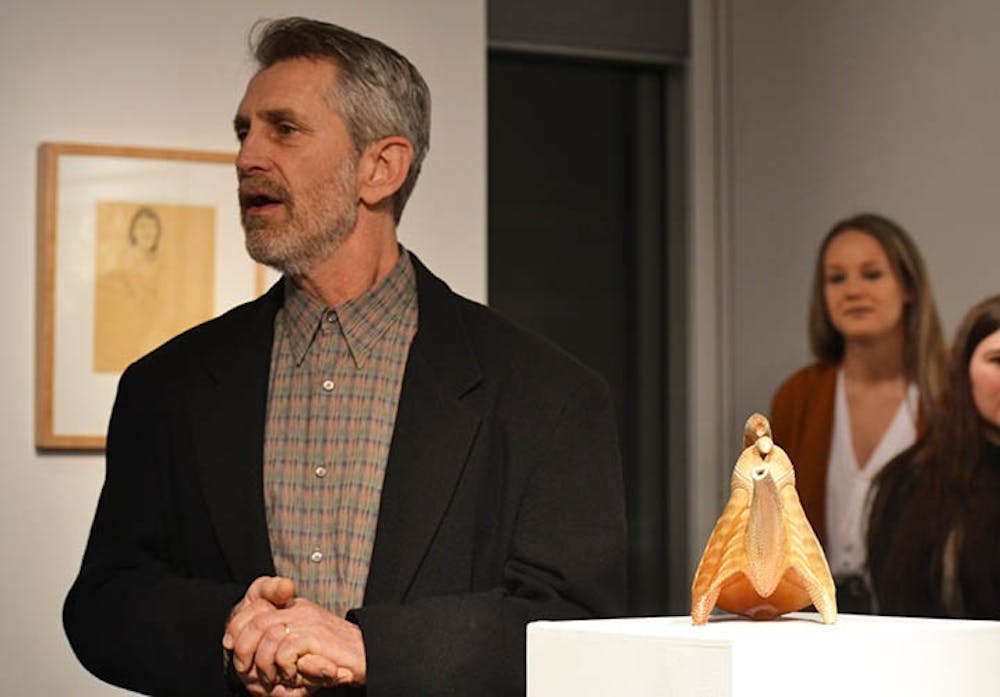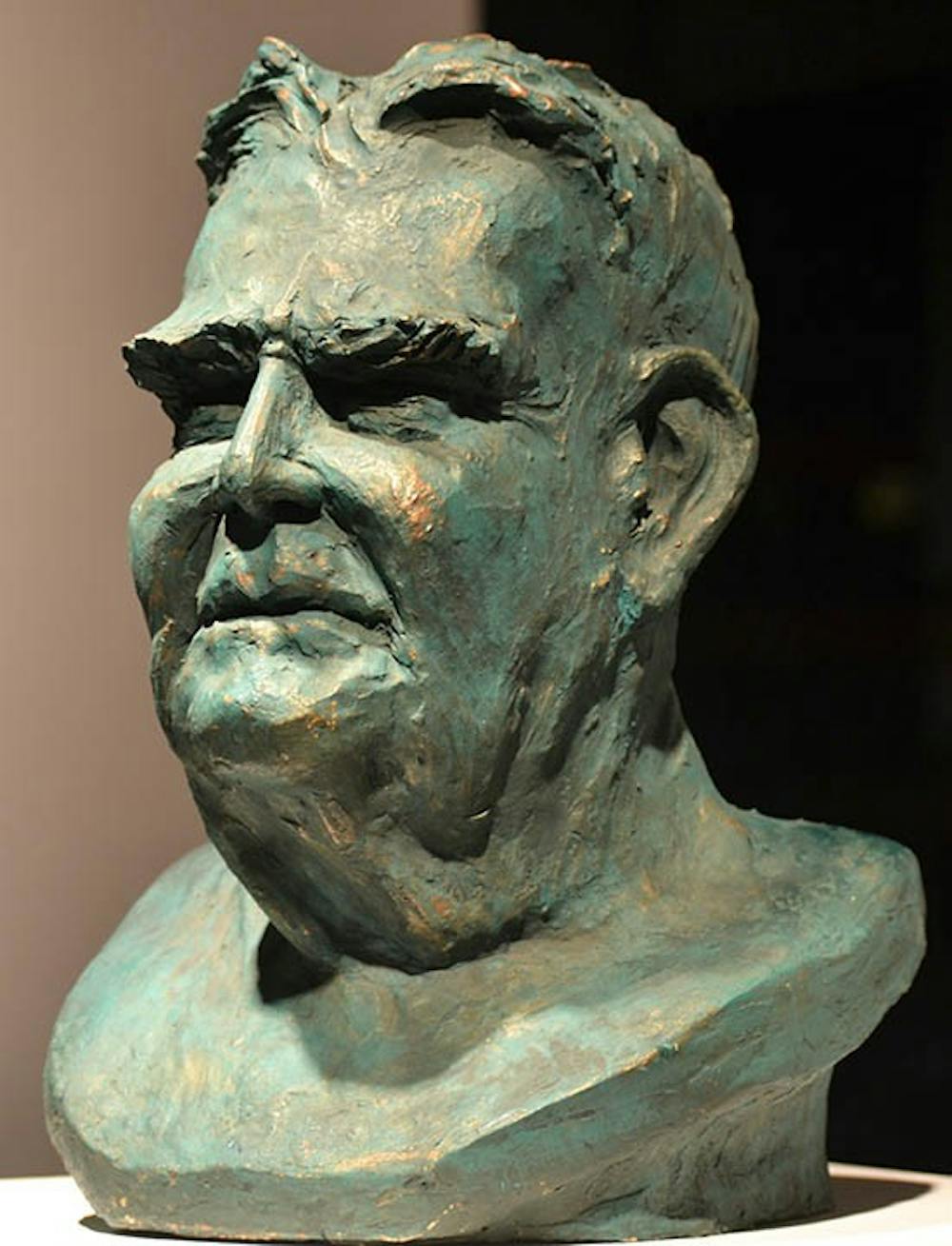The fluidity between past and present was encapsulated by Shippensburg University’s Art and Design Department in the “Then & Now” faculty exhibition, which held its opening reception in the Kauffman Gallery on Jan. 31.
SU art professors constructed the exhibit with a three-part progression. The professors who partook in the exhibition include Michael Campbell, Benjamin Culbertson, Steven Dolbin, Kathryn Keely, Mark Moilanen, Cookie Redding and William Whitely. Each individual displayed a piece of art that was created during their undergraduate and graduate studies, and a current piece of artwork. The selected artworks varied in medium depending on the artists’ preferences, including stoneware, silk-screen, graphite on newsprint and terra cotta.
The collaborative timeline of art on display at the “Then & Now” opening ceremony was witness to the time, practice and ambition that the artists invested in their crafts to achieve a strong and visible sense of artistic growth. Opening up to gallery goers, the faculty artists in attendance revealed the backstories of their artworks and how their selections — along with all of the art they created during their lives — are each a noteworthy part of their journey as an artist and a person.
“This show isn’t necessarily about us,” Moilanen said. “It’s about [the students]. Where are you at in your life if you’re currently an undergrad? What works are you creating?”
Using their own experiences and art as a roughly sketched template for their students to follow, many of the faculty artists emphasized the importance of accepting constructive criticism and flexibility.
Similar to the unpredictable turns of life, the vast possibilities of art has led multiple SU art professors to a form of art that strayed from how they originally envisioned themselves as an artist.

While all three of Whitely’s artworks in the exhibition were silk-screen, digital print variations, he confessed during his presentation that he is actually a painter turned graphic designer. This same sense of diversification was also revealed in the works of Campbell and Dolbin. Contrary to Whitely, Campbell began as a graphic design student, later pursuing the medium of paint, and Dolbin gave life to his still life sketches by experimenting with sculpture.
“[As an artist] you want to create work,” Dolbin said. “And your work will point you in the direction you are meant to go.”
Sometimes the direction may be fogged, but for many “Then & Now” artists, art has remained a constant, with an ability to document growth and give memories an extended life.
With tears clogging his voice, as Dolbin presented his acrylic on canvas brush drawing, “Father Napping: Premonition,” he shared that his father died from Alzheimer’s disease during the fall semester. During the time of his graduate studies he secretly sketched this piece of his father as he was napping on the couch, Dolbin said. While the portrait was not crafted during the onset of his father’s Alzheimer’s, for Dolbin it captures a familiar image of his father, as he often slept during the tail end of the disease.
Campbell also faced a physically and emotionally taxing situation last year when he underwent triple bypass surgery. In his piece “Waiting…2.0,” Campbell documented the time leading up to and following his surgery through the marriage of digital print and watercolor in inset images. While waiting for the day of surgery to come, Campbell said he took photographs of his surroundings, and then picked up a brush and pen to finish the piece once he regained his strength post-surgery.
The opening reception for “Then & Now” figuratively took the artworks off of their wall mounts and removed them from their stands, as the artists turned their hands over to reveal what prompted each piece’s creation. This left gallery viewers with a valuable lesson that extends well past the creation of art — respect the past, cherish today and make tomorrow even better.
“Then & Now” will remain on display in the Kauffman Gallery through March 21. The exhibit can be viewed during gallery hours from 8 a.m. to 12 p.m., Monday through Thursday, or by appointment.




The Slate welcomes thoughtful discussion on all of our stories, but please keep comments civil and on-topic. Read our full guidelines here.